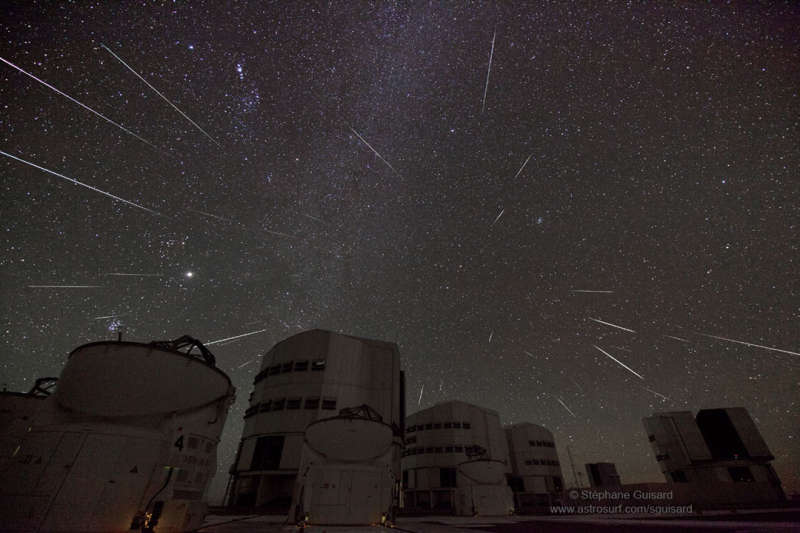
|
Explanation: From a radiant point in the constellation of the Twins, the annual Geminid meteor shower rain down on planet Earth. Tonight, the Geminds reach their peak and could be quite spectacular. The featured blended image, however, captured the shower's impressive peak in the year 2012. The beautiful skyscape collected Gemini's lovely shooting stars in a careful composite of 30 exposures, each 20 seconds long, from the dark of the Chilean Atacama Desert over ESO's Paranal Observatory. In the foreground Paranal's four Very Large Telescopes, four Auxillary Telescopes, and the VLT Survey telescope are all open and observing. The skies above are shared with bright Jupiter (left), Orion, (top left), and the faint light of the Milky Way. Dust swept up from the orbit of active asteroid 3200 Phaethon, Gemini's meteors enter Earth's atmosphere traveling at about 22 kilometers per second.
Tonight:
Join NASA's Geminids Tweet Chat
|
January February March April May June July August September October November December |
| ||||||||||||||||||||||||||||||||||||||||||||||||
NASA Web Site Statements, Warnings, and Disclaimers
NASA Official: Jay Norris. Specific rights apply.
A service of: LHEA at NASA / GSFC
& Michigan Tech. U.
Based on Astronomy Picture
Of the Day
Publications with keywords: Geminids - meteor shower
Publications with words: Geminids - meteor shower
See also:
- APOD: 2025 August 12 Á Perseids from Perseus
- APOD: 2025 August 2 Á Fireflies, Meteors, and Milky Way
- APOD: 2025 July 25 Á Twelve Years of Kappa Cygnids
- APOD: 2024 December 15 Á Geminid Meteors over a Snowy Forest
- Phaethon s Brood
- APOD: 2024 December 10 Á The Great Meteor Storm of 1833
- Quadrantids of the North
